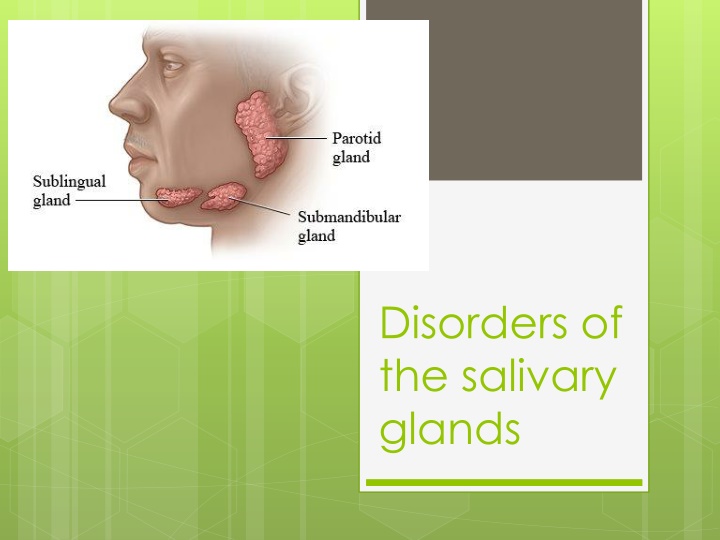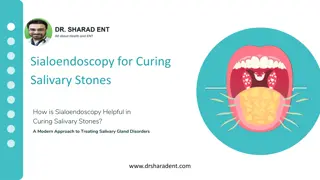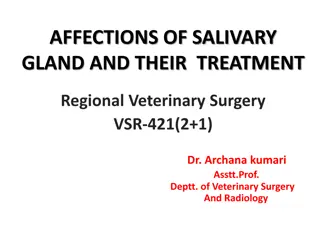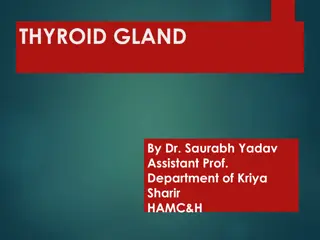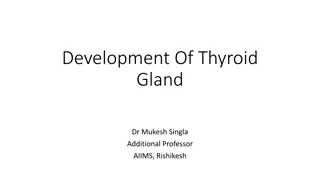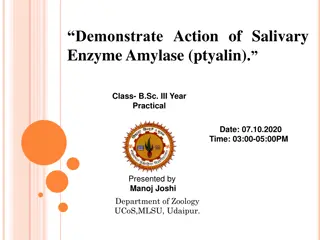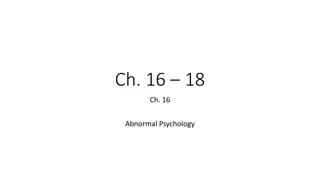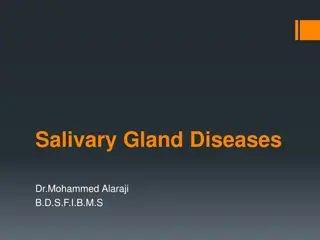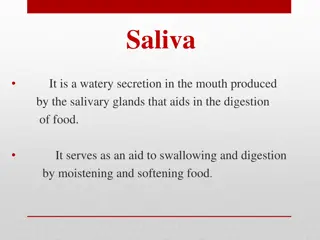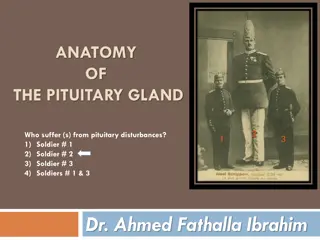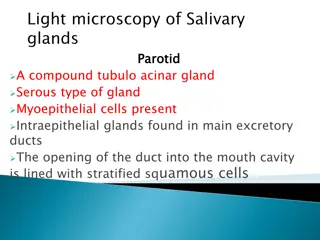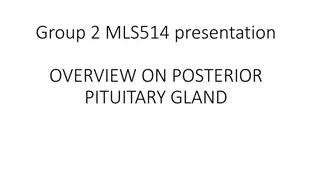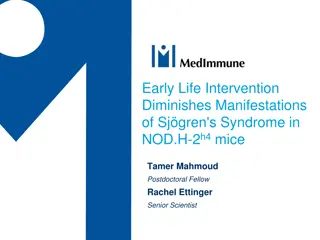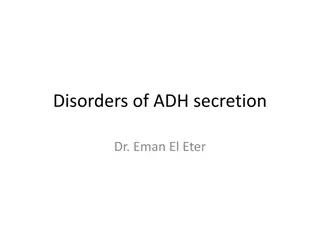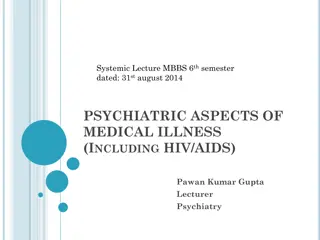Salivary Gland Disorders and Treatments
Salivary gland disorders can range from inflammatory conditions like mumps to tumors, often affecting the parotid gland. Understanding symptoms, diagnostic methods, and surgical options like parotidectomy can lead to effective management and treatment of these conditions.
Download Presentation

Please find below an Image/Link to download the presentation.
The content on the website is provided AS IS for your information and personal use only. It may not be sold, licensed, or shared on other websites without obtaining consent from the author.If you encounter any issues during the download, it is possible that the publisher has removed the file from their server.
You are allowed to download the files provided on this website for personal or commercial use, subject to the condition that they are used lawfully. All files are the property of their respective owners.
The content on the website is provided AS IS for your information and personal use only. It may not be sold, licensed, or shared on other websites without obtaining consent from the author.
E N D
Presentation Transcript
Disorders of the salivary glands
THE PAROTID GLAND lies in a recess bounded by the ramus of the mandible, the base of the skull and the mastoid process. It lies on the carotid sheath and CNs XI and XII and extends forward over the masseter muscle. The gland is enclosed in a sheath of dense deep cervical fascia.
Several important structures run through the parotid gland. the facial nerve trunk that divides into its major five branches; the terminal branch of the external carotid artery that divides into the maxillary artery and the superficial temporal artery; the retromandibular vein; intraparotid lymph nodes. The gland is divided into deep and superficial lobes, separated by the facial nerve. Eighty per cent of the parotid gland lies superficial and 20% deep to the nerve. An accessory lobe is occasionally present lying anterior to the superficial lobe on the masseter muscle.
Inflammatory disorders Viral infections Mumps is the most common cause of acute painful parotid swelling and predominantly affects children. It is spread via airborne droplets of infected saliva. The disease starts with a prodromal period of 1 2 days, during which the patient experiences fever, nausea and headache. This is followed by pain and swelling in one or both parotid glands. Parotid pain can be very severe and exacerbated by eating and drinking. Symptoms resolve within 5 10 days. The diagnosis is based on history and clinical examination; recent contact with an infected patient with a painful parotid swelling is often sufficient to lead to a diagnosis.
Tumors of the parotid gland The parotid gland is the most common site for salivary tumors. Most tumors arise in the superficial lobe and present as slow-growing, painless swellings below the ear, in front of the ear or in the upper aspect of the neck. Less commonly, tumors may arise from the accessory lobe and present as persistent swellings within the cheek. Rarely, tumors may arise from the deep lobe of the gland. Symptoms include difficulty in swallowing and snoring. Some 80 90% of tumors of the parotid gland are benign, the most common being pleomorphic adenoma.
Parotidectomy The aim of superficial parotidectomy is to remove the tumor with a cuff of normal surrounding tissue. The most important structure traversing the parotid gland in the facial nerve. A superficial parotidectomy is when the part of the gland superficial to the facial nerve is removed. A deep lobe parotidectomy is when the part of the gland beneath the nerve is removed. A total parotidectomy is when both are dissected and removed.
COMPLICATIONS OF PAROTID GLAND SURGERY Hematoma formation. 2. Infection. 3. Deformity: unsightly scar and retromandibular hollowing. 4. Temporary facial nerve weakness. 5. Transection of the facial nerve and permanent facial weakness. 6. Sialocele. 7. Facial numbness. 8. Permanent numbness of the ear lobe associated with great auricular nerve transection. 9. Frey s syndrome. 1.
